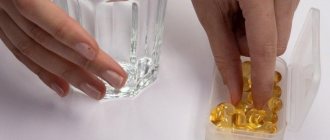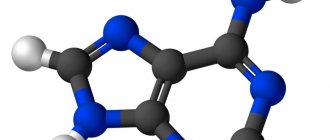In this article we will tell you:
- Key functions of vitamin D
- Interaction with other elements
- Normal vitamin D content in the body
- Signs and causes of vitamin D deficiency
- Consequences of vitamin D deficiency in the body
- Consequences of hypervitaminosis (excess vitamin D)
- How to find out your vitamin D level
- Rules for taking vitamin D
- Vitamin D Rich Foods
- Vitamin D in cosmetology
Not every person knows why vitamin D is needed. But in vain. This element plays a very important role in the body. Unlike other vitamins, vitamin D acts as a hormone and every cell in the body has a receptor for it. Thanks to it, the skeleton is formed normally, immunity increases, blood pressure and heartbeat improve. Vitamin deficiency is manifested by frequent colds, hair loss, and depression. Experts estimate that about 1 billion people have low levels of vitamin D.
But an excess of vitamin does not lead to anything good, so you need to know the norm and check your level. To do this, you need to take special tests. After them, the doctor may prescribe vitamin D supplements. In addition, it is worth diversifying your menu with products rich in this vitamin. In general, prepare a piece of paper and a pen, there is a lot of useful information about vitamin D below.
Key functions of vitamin D
Vitamin D (calciferol)
– two substances similar in structure and action: vitamin D2 (ergocalciferol) and vitamin D3 (colecalciferol or cholecalciferol).
Under the influence of sunlight, vitamin D3 is synthesized in the skin from provitamins (from food and synthesis from cholesterol). In the body, from these two forms (D2, D3), the active product of their transformation, calcitriol, is formed and used. It is formed in two stages: first in the liver and then in the kidneys.
The history of the discovery of vitamin D is associated with the study of retinol, or vitamin A. At the beginning of the 20th century, it was discovered that fish oil is rich in retinol. As an experiment, fish oil was given to dogs. After some time, scientists noticed that the animals stopped suffering from rickets, which was one of the main problems in pediatrics at that time.
Experts tried to link rickets with vitamin A deficiency, but Elmer McCollum, who discovered retinol, refuted this hypothesis. He conducted his experiments with dogs suffering from rickets: for some time, McCollum gave them fish oil with neutralized retinol. This prompted the scientist to think that the cure comes from some other substance, which is also contained in fish oil. This is how vitamin D was discovered at the beginning of the 20th century.
About a year later, scientists discovered that if food is exposed to ultraviolet light, the amount of vitamin D in it increases. Thus, it was established that the sun is the source of this valuable element.
Main functions of vitamin D
:
- Promotes normal skeletal formation.
- Ensures the exchange of calcium and phosphorus in the body.
- Promotes muscle tone.
- Increases immunity.
- Necessary for the functioning of the thyroid gland and normal blood clotting.
- Helps the body restore the protective membranes surrounding the nerves.
- Participates in the regulation of blood pressure and heartbeat.
- The connection between vitamin D deficiency and autoimmune diseases and cancer is suspected and actively studied.
Main types of vitamin D
Vitamins of group D (C27H44O3) are biologically active substances. According to their structure they are classified as sterols.
The group includes the following elements:
- D1
Chemical Formula: C56H88O2
Consists of two components: lumisterol and ergocalciferol. It is produced artificially. Does not play a significant role for humans and medicine.
- D 2
(ergocalciferol)
Chemical formula: C28H44O
A person can receive this element only through food. Also found in dietary supplements. Regulates the exchange of calcium and phosphorus in the body.
- D3
(cholecalciferol or colecalciferol)
Chemical formula: C27H44O
Of the entire group, this is the most active substance. Its sources for humans are food (fish, caviar, butter, cheese, chanterelle mushrooms) and sunlight
. Even five minutes of direct sunlight can be enough for the body to produce its daily requirement of vitamin D3.
We recommend
“Vitamins for sleep, against insomnia and obesity” Read more
- D4
(dehydrocholesterol)
Chemical formula: C28H46O
Contained in the skin. Under the influence of ultraviolet rays it turns into D3 in the epidermis.
- D5
(sitocalciferol)
Chemical formula: C29H48O
This is a synthetic analogue of vitamin D3, first produced in Chicago. Virtually non-toxic. Used in the treatment of cancer. It was found in nature in wheat oil.
- D6
(stigmacalciferol)
Chemical formula: C29H46O
The element is still being studied by specialists. It was synthesized from plants.
Metabolism of calceferol in the body
For vitamin D to start working in the body, it must go through two stages of activation, which will trigger its mechanism of action:
- In the liver, the substance interacts with enzymes and is converted into calcidiol (25 (OH) D3). It is based on the content of calcitriol in the blood serum that it is determined whether there is enough vitamin D in the body.
- At the second stage, the active form of vitamin D, calcitriol (1.25 (OH)2D3), is formed in the kidneys. It is of a steroid nature.
Calcitriol is responsible for the exchange of phosphate and calcium in the body. In intestinal cells, it stimulates the production of a special protein that transports calcium into the blood. And in the urinary tract it affects the muscles, enhancing the reabsorption of calcium.
The production of vitamin D in the human body is regulated by parathyroid hormone (PTH). The level of PTH is directly related to the amount of calcitriol, phosphorus and calcium: the more of these elements, the less parathyroid hormone and active enzymes are needed to replenish vitamin D.
After completing its work, vitamin D is converted by enzymes into an inactive substance (calcitroic acid metabolite), which is excreted from the body along with bile.
The question of the effect of vitamin D on the human body is still open. Scientists continue to study this substance. Perhaps in the near future new discoveries will be associated with it that can improve human life and health.
How does it interact?
Vitamin D3 should not be taken with food. With simultaneous use with diuretics, hypercalcemia develops. Together with cardiac glycosides, there is a possible risk of arrhythmia.
If you take antacids and vitamin D3 together for a long time, intoxication may develop.
There should be a two hour interval between taking sodium fluoride and vitamin D3. The interval between taking hetracyclinone and vitamin D3 is three hours.
Taking other forms of vitamin D3 can lead to hypervitaminosis.
Interaction with other elements
The human body is a very complex system in which all elements are in constant interaction. And the health and general well-being of a person directly depends on how coordinated their work is. The effectiveness of vitamins can be enhanced by “helper molecules,” or cofactors. These are small compounds that are involved in biochemical processes. The most significant cofactors that enhance the effect of vitamin D include:
- Calcium
. As already mentioned, vitamin D controls calcium levels in the body. The mineral is well absorbed only with a sufficient amount of calcitriol. Therefore, these two substances are inextricably linked with each other.
- Magnesium
. This element performs many functions. For example, it is needed to convert food into energy. Magnesium is also involved in the absorption of calcium, phosphorus, sodium, potassium and vitamin D. Magnesium deficiency can be corrected not only with supplements, but also by including foods such as spinach, nuts, seeds, and whole grains in the diet.
- Vitamin K
. This element is responsible for bone health and also increases blood clotting, so it is simply necessary for the human body. If it is not there, people will begin to die from the slightest injury. Vitamins D and K work together when it comes to proper skeletal development. You can replenish your vitamin K reserves with foods such as kale, spinach, liver, eggs and hard cheese.
- Zinc
. Multifunctional element. With its participation, the body grows and develops, new cells are formed in it, infections are fought and fats, carbohydrates and proteins are fully absorbed. Zinc also facilitates the absorption of vitamin D and helps calcium enter bone tissue. A person can get this element through meat, vegetables and some grains.
- Bor
. A person needs very little of this substance, but it is still irreplaceable. Boron is involved in the metabolism and absorption of vitamin D. It is found in peanut butter, wine, avocado, raisins and some leafy vegetables.
- Vitamin A
. Controls protein synthesis. Together with vitamin D, it participates in the functioning of the genetic code. If a person lacks retinol, the functionality of vitamin D will be impaired. Vitamin A is found in carrots, mangoes, liver, butter, cheese and milk. Retinol is a fat-soluble substance and a powerful antioxidant. If it enters the body from plant foods, then it should be combined with fat-containing foods. This way retinol will be better absorbed.
Normal vitamin D content in the body
Vitamin D is a vital substance for the human body, so its supply must be controlled. The daily intake depends on the person’s age:
| Age category | Daily requirement for vitamin D |
| Infants under 1 year | 7.5 – 10.0 mcg (400 – 500 IU) |
| Children from 1 to 5 years old | 10 mcg (400 IU) |
| Children from 5 to 13 years old | 2.5 mcg (400 IU) |
| Adults from 15 to 60 years old | 2.5 – 5.0 mcg (500 IU) |
| Adults over 60 years old | 10 – 15 mcg (600 IU) |
| Pregnant and lactating women | 10 mcg (500 IU) |
Daily replenishment dose for vitamin D deficiency
:
| Desired level, NG/ML | 20 | 30 | 40 | 50 | 60 | 70 | |
| Current NG/ML level | 10 | 1000 | 2200 | 3600 | 5300 | 7400 | 10100 |
| 15 | 500 | 1700 | 3200 | 4900 | 7000 | 9700 | |
| 20 | 1200 | 2600 | 4300 | 6400 | 9100 | ||
| 25 | 600 | 2000 | 3700 | 5800 | 8600 | ||
| 30 | 1400 | 3100 | 5200 | 7900 | |||
| 35 | 800 | 2500 | 4600 | 7300 | |||
| 40 | 1700 | 3800 | 6500 | ||||
| 45 | 900 | 3000 | 5700 | ||||
| 50 | 2100 | 4800 | |||||
| 60 | 2700 | ||||||
Signs of Vitamin D Deficiency
At the beginning of the 20th century, many children suffered from rickets. This disease develops due to a lack of vitamin D. In adults, a deficiency of this element causes osteoporosis, intestinal obstruction, and weakened immunity.
Initial symptoms of vitamin D deficiency include weakness, sweating, irritability, decreased performance and appetite, sleep disturbances, dry and burning mouth.
Due to weakened immunity, a person begins to suffer from colds and infectious diseases more often. Impairments in the functioning of the immune system can even lead to the development of autoimmune and oncological pathologies.
With a deficiency of calciferol, a failure occurs in the synthesis of connective tissue, for example, cartilage. This can cause a person to experience pain in the joints and spine. Also, with a lack of vitamin D, collagen production is disrupted, and the skin begins to age faster.
Another problem is that when the body does not have enough calciferol, calcium begins to accumulate in it. Bones become very fragile and break easily, and teeth are destroyed.
Vitamin D is responsible for the conduction of nerve impulses. Its deficiency leads to cuts in the smooth muscles of the intestines and obstruction. Multiple sclerosis, skeletal muscle damage, and blurred vision may also develop.
Lack of calciferol even affects the reproductive system. In women, the process of egg maturation stops, and in men, testosterone production decreases, which can lead to impotence.
Overdose
Sometimes, due to improper use of the drug, an overdose occurs.
Vitamin D3 hypervitaminosis manifests itself in the following symptoms:
- diarrhea or constipation;
- dry mouth;
- thirst;
- frequent urination;
- anorexia;
- nausea and vomiting;
- taste of metal in the mouth;
- weakness, fatigue;
- cloudiness in the urine;
- bone pain;
- drowsiness;
- arrhythmia;
- hypertension;
- skin itching;
- rarely – psychosis.
It happens that it comes to chronic intoxication due to an overdose.
It is expressed in:
- renal and heart failure;
- hypercalcemia;
- hypertension;
- growth disorders in children.
If such manifestations occur, you should stop taking the medication as soon as possible and seek help. Usually hemodialysis is performed, saline solution, furosemide, and electrolytes are administered intravenously. A diet low in calcium is prescribed.
Causes of vitamin D deficiency in the body
Why is the human body sorely lacking vitamin D? The reasons are obvious. This vitamin is synthesized in the skin in extremely small quantities and only under the influence of sunlight, but we spend little time in the sun, constantly staying indoors. And even on a long-awaited vacation on a sunny beach, we protect ourselves as much as possible from UVB rays with the help of sunscreens.
Vitamin D also enters the body with food, but, again, not always in sufficient quantities.
A deficiency of this vitamin is typical for those who suffer from diseases of the kidneys, liver and gallbladder, and experience digestive problems due to disturbances in the intestinal microbial environment (in this case, vitamin D is poorly absorbed from food and is less easily converted into its active form).
Fans of soda, dairy products and some other types of food rich in phosphates often face a lack of vitamin D. Excess phosphorus in the body interferes with the full absorption and use of vitamin D.
The human body has about 30 thousand genes, and among them only 2 thousand are affected by vitamin D. However, its deficiency creates a lot of problems: a person can develop various unpleasant diseases, the total number of which exceeds 200. This is a good reason to take care of the optimal level of vitamin D in the body.
When is it prescribed?
The drug is used in the following cases:
- treatment and prevention of rickets;
- treatment of osteoporosis;
- diseases of the small intestine;
- cirrhosis of the liver;
- postoperative conditions (surgery on the stomach and small intestine);
- therapy for hypoparathyroidism;
- treatment of pseudohypoparathyroidism;
- in cases of mineral metabolism disorders in people over forty-five years of age;
- with intolerance to dairy products.
Consequences of vitamin D deficiency in the body
- Skin diseases (psoriasis, eczema, etc.), increased sweating, problems with wound healing. There is clinical evidence that this is due to vitamin D deficiency.
- Partial baldness, hair loss. The correlation between poor hair condition and low levels of vitamin D has been proven for quite some time. Moreover, high doses of this vitamin have been successfully used to treat alopecia areata.
- Bleeding gums, increased caries, tooth loss, increased sensitivity of enamel, discomfort in the mouth.
- Weakened immunity and frequent cases of bacterial and viral infections. If you are constantly sick with ARVI and flu, the reason most likely lies in a lack of vitamin D. In children, its deficiency manifests itself in frequent pneumonia and bronchitis. In severe cases, an autoimmune disease may even develop.
- Increased fatigue, weakness.
- Problems with the musculoskeletal system: aching joint pain, osteoporosis, decreased muscle tone, cramps.
- Depressive conditions and other mental disorders. More than 600 studies have been conducted proving their connection with vitamin D deficiency.
Targeted nutrition tips
that will increase your energy level by 10 out of 10
From TOP nutritionists of the MIIN
Get tips
Thousands of studies have been conducted on the topic of hypovitaminosis D and its consequences, which include premature birth and slow fetal development, rickets in children, cardiovascular disorders, infertility, cancer, erectile dysfunction in men and endometriosis in women, various allergies, thyroid diseases glands, gestational diabetes and type 1 diabetes, autoimmune diseases. Even tooth decay and obesity are associated with low vitamin D levels!
Consequences of hypervitaminosis (excess vitamin D)
An overdose of vitamin D is almost more dangerous than a lack of it. In Soviet times, it was believed that it was better to have a mild form of rickets than an excess of calciferol.
Hypervitaminosis can be acute or chronic.
The acute form occurs in children if they have been taking vitamin D in high dosages for a long time. The condition may worsen due to increased sensitivity to the drug.
Symptoms of intoxication are as follows:
- lethargy, lack of appetite, constipation or diarrhea, nausea, vomiting. Diarrhea and vomiting can lead to dehydration. This is very dangerous for a child’s body;
- headache, muscle and joint pain, cramps;
- increased body temperature and blood pressure, slow pulse, difficulty breathing.
The chronic form develops as a result of the use of calciferol in therapeutic doses for a long time, at least six months.
Its signs:
- lack of appetite, lethargy, decreased rate of weight gain or complete lack of weight gain;
- changes in bone tissue due to increased calcium content: rapid overgrowth of the large fontanelle, ossification of the sutures of the skull bones, partial ossification of the growth zone of long bones;
- increased calcium content in the blood, which leads to the fact that the mineral begins to be deposited on the walls of the blood vessels of internal organs: in the kidneys, heart, lungs, etc. This, in turn, disrupts their functioning.
Intoxication with calciferol has three forms, which depend on the severity: mild (without toxicosis), moderate (with moderate toxicosis) and severe (with severe toxicosis).
Mild intoxication may pass without a trace. After a severe form, complications can remain for life. Here, the greatest harm is caused by calcium deposits on the walls of blood vessels and in internal organs. The functioning of most body systems is disrupted. Children may develop chronic pyelonephritis and irregular teething.
In adults, an excess of calciferol leads to increased blood pressure and the development of cardiosclerosis, which in turn causes heart rhythm disturbances.
Side effects
The drug is usually well tolerated, but sometimes unwanted side effects occur:
- allergy;
- hypercalcemia;
- hypercalciuria;
- lack of appetite;
- headache;
- polyuria;
- myalgia;
- arthralgia;
- hypertension;
- arrhythmia;
- renal failure;
- exacerbation of tuberculosis.
If they appear, you should stop treatment and seek help.
How to find out your vitamin D level
To determine the level of vitamin D, a special blood test is taken - 25-OH. The blood is examined using high-performance liquid chromatography with mass spectrometry (HPLC/MS).
A number of laboratories instead use the ELISA method, which shows a lower degree of reliability (since it is, in principle, not intended to measure the level of vitamins D and captures many related metabolites, and the result is overestimated by 55%). If there are no laboratories nearby that accept analysis for 25-OH, you can also donate blood for ELISA, but you should remember the error of this method.
If the test result is less than 50 ng/ml, this indicates that the body is in great need of vitamin D and is deficient in it. An even lower figure, 35 ng/ml or less, indicates problems with the absorption of magnesium, calcium, zinc and other microelements from food, and if vitamin D drops below 20 ng/ml, this is a serious deficiency.
Benefits and harms
The benefits of vitamin D are enormous, since it plays a critical role in the body's absorption of calcium, and also directly affects metabolism and the immune system. In addition, it is thanks to it that strength is restored faster after heavy or prolonged physical activity.
Vitamin D prevents a huge number of serious health problems, in particular:
- Has a positive effect on the condition of the skin and hair.
- Strengthens bones and teeth.
- Prevents the development of arthrosis and arthritis.
- Improves the functioning of the cardiovascular system.
- Improves memory, promotes concentration.
- Improves vision.
- Accelerates tissue regeneration processes.
- Prevents the development of various neoplasms.
- Normalizes hormonal balance.
- Normalizes blood sugar levels.
- Promotes a good night's sleep.
It also has a beneficial effect on the human nervous system, preventing loss of strength, the development of apathy, depression, permanent (constant) irritability, and tearfulness.
Rules for taking vitamin D
Most domestic doctors recommend replenishing the deficiency of this valuable vitamin by taking it in doses of 400-800 IU. But this is too low a dosage, which is unlikely to have a noticeable effect. Even 5000 IU (a preventive dose of vitamin D for residents of the Northern regions) is not enough: it only allows you to reach the lower limit of the norm.
The optimal dosage for those suffering from hypovitaminosis D with an indicator of 20-40 ng is 10,000 IU daily for two to three months. This is an amount of substance approximately equal to that which would be produced by the human body under UV rays in 20-30 minutes (without SPF creams, of course). After a two to three month course, they are tested again, and if the vitamin level is restored, they switch to a lower dose - 4000-5000 IU (maintenance).
If the 25-OH analysis showed a result of 1-20 ng, then you need to take 20,000 IU of vitamin D every day, and then, within a month, 7,000-10,000 units. This is followed by monitoring, and if the dynamics are positive, the vitamin level is maintained with a prophylactic dose of 5000 IU, regardless of the time of year.
If the test results are above 40 ng, you need to take 7000 IU daily for one to one and a half months, and then maintain the vitamin level with a dose of 5000 units.
There are also higher dosages. They are prescribed, in particular, for tuberculosis and autoimmune diseases. Patients should take 30,000-40,000 IU per day for a long period (of course, under the supervision of a doctor).
We recommend
“Nutritious nutrition for children: from infants to school graduates” Read more
In general, correcting the situation with a lack of vitamin D in the body in 90% of cases turns out to be quite difficult. This vitamin is by no means harmless: long-term use of ultra-high doses (more than 40,000 units) is fraught with toxic effects and overdose. For people who have genetic mutations of VDR (genetic polymorphism of the receptors of this vitamin, which are present in almost every cell of the body), even such gigantic doses do not help to at least minimally improve the level of D. They have to take it in the form of injections. The same applies to people with gastrointestinal diseases.
Problems such as lack of cofactors, excess body weight, problems with intestinal flora, gall bladder, kidneys and liver slow down the treatment process. Pathogenic microorganisms also have an inhibitory effect:
- HIV. This virus binds to VDR(R) receptors and prevents them from converting vitamin D from food into the active form of D.
- Live Borrelia. Lyme/Borrelia reduces monocyte VDR by 50-fold.
- Epstein-Barr virus, or herpesvirus, reduces VDR by almost five times.
- Koch's bacillus and other mycobacteria Mycobacterium tuberculosis complex that cause tuberculosis. The sensitivity of the receptors decreases by 3.3 times.
- Cytomegalovirus (CMV) reduces VDR by 2.2 times.
- Acpergillus fumigus, often associated with cystic fibrosis.
- Helicobacter pylori.
- Pseudomonas aeruginosa (Pseudomonasaeruginosa).
Vitamin D receptors can be activated with the help of gamma-tocotrienols, Omega-3, Resveratrol, curcumin. These drugs work even with VDR mutations.
Learn more about NUTRILITE™ Vitamin D
Ultra-violet rays
The easiest and most natural way to increase your vitamin D levels is to spend more time in the sun. The ultraviolet spectrum of sunlight consists of three fractions of rays: UV-A, UV-B and UV-C. The synthesis of cholecalciferol requires B-fraction rays, which do not pass through the glass window. Therefore, it is recommended to catch them only in the fresh air. It should also be remembered that clouds and urban smog can retain up to 50% of ultraviolet radiation. The minimum duration of sunbathing should be 20-30 minutes a day from 11 a.m. to 2 p.m. Unfortunately, it is during these hours in the summer that you are most likely to get a sunburn. And the use of sunscreens with an SPF factor higher than 8 units block the production of vitamin D. Therefore, it is necessary to weigh the dangers and benefits of such tanning. If you can’t be in the sun, you can use a solarium. The rays of UV lamps are not equivalent to those of the sun, but they partially compensate for the deficiency of natural ultraviolet radiation. However, unreasonable use of a solarium can cause premature skin aging, pigmentation and even the appearance of melanoma.
Vitamin D Rich Foods
Among foods rich in vitamin D, fish is the leader. Calciferol is also found in whole milk and products made from it (cheese, butter), but in smaller quantities and in a form that is difficult to digest.
The main source of vitamin D is fish oil. 100 g of product contains 250 mcg of calciferol. This is 2500% of the daily requirement required by an adult.
The following is a list of dishes that contain vitamin D. The amount of calciferol in 100 g of product as a percentage of the daily intake is indicated in parentheses:
- Cod liver (1000%).
- Fatty herring (300%).
- Chum salmon (163%).
- Atlantic salmon (110%).
- Pink salmon (109%).
- Black caviar (80%).
- Egg yolk (77%).
- Tuna (57%).
- Chanterelle mushrooms – (53%).
As you can see, among the first are different varieties of fish. It contains more vitamin D than eggs or mushrooms. Therefore, housewives are recommended to cook fish dishes for their family more often. This way, both children and adults will receive the required amount of calciferol.
Below is a summary table of foods that contain vitamin D:
| Products | μg/100 g of product | Daily value for an adult, % |
| Fish: | ||
| Fish oil (from cod liver) | 250 | 2500 |
| Chum salmon | 16.3 | 163 |
| Mackerel | 16.1 | 161 |
| Milk products: | ||
| Butter | 1.5 | 13 |
| Ghee | 1.8 | 18 |
| Goat milk | 1.3 | 13 |
| Cheddar cheese | 1 | 10 |
| Swiss cheese | 1 | 10 |
| Processed cheese "Russian" | 0.74 | 7 |
| Eggs: | ||
| Egg yolk | 7.7 | 77 |
| Whole chicken egg | 2.2 | 22 |
| Quail egg | 1.4 | 14 |
| Mushrooms: | ||
| Chanterelles | 5.3 | 53 |
| Morels | 5.1 | 51 |










